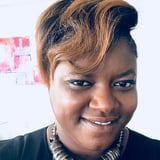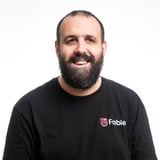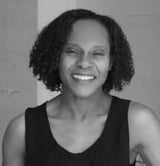Summary
As we shift into a mobile first world, are you struggling to conceptualize and design accessible mobile experiences? While screen readers are included on both IOS and Android, it can be difficult and overwhelming for designers to learn about them. This session will help you get started! Samuel Proulx, Fable’s accessibility evangelist and a life-long screen reader user, will guide you through the ins and outs of screen readers on mobile. This interactive live demo will show you what an excellent mobile experience can sound like, give you some ideas of things to keep in mind during design, and help you make the case for bringing the voices of assistive technology users into the training and testing at your organization.
Key Insights
-
•
Mobile screen readers are built into both iOS and Android, needing no installation and can be activated via Siri or Google Assistant.
-
•
Android's accessibility ecosystem offers more customizability, including third-party screen readers and voices, but at the cost of greater complexity and inconsistency.
-
•
Apple’s VoiceOver is uniform across iOS devices, easier to learn, well-documented, and supported by a large user community, but less customizable.
-
•
Screen curtain on iOS allows blind users to protect their privacy by turning off the display while still using VoiceOver.
-
•
Most screen reader users do not keep default settings; they adjust voice, speech rate, and gestures to their individual needs.
-
•
Touchscreens provide spatial awareness for blind users, which is impossible with desktop screen readers relying on linear navigation.
-
•
Typing with a screen reader is a skill involving exploring keys by touch and double-tapping, which becomes muscle memory over time.
-
•
Blind users' choice between mobile platforms heavily depends on the screen reader experience rather than other device features.
-
•
Developers and designers can only test basic accessibility functionality on their own; true user experience requires research with native assistive tech users.
-
•
Accessibility efforts in Android started later than Apple’s, contributing to smaller community size and less documentation for Android screen readers.
Notable Quotes
"The screen reader is going to be the all-important all-consuming driver of why and how that decision gets made."
"If the built-in screen reader doesn’t meet your needs, you can go ahead and pick another screen reader on Android."
"Privacy for those of us who are blind and visually impaired is a big deal and we might not always realize when someone’s looking over our shoulder."
"You explore the keyboard with your finger until you find the letter that you are interested in and then you need to double tap on that letter."
"Disability is never one size fits all. The key to making accessibility is to offer customizability and to balance that with ease of use."
"Touch screens allowed blind people to use physical spatial information in a way that’s not possible on a desktop."
"Almost I can’t think of a single person who uses the out of the box configuration on a screen reader."
"Developers and designers testing products can determine what the screen reader reads, but they can’t determine the actual experience."
"The Android community tends to be smaller and less documented because their accessibility efforts started later than Apple’s."
"Apple just works, but if it doesn’t work for you, you’re probably not going to choose Apple."
Or choose a question:














More Videos

"If designers spend more time talking about titles than their work, we’re just gazing into our navels."
Adam Cutler Karen Pascoe Ian Swinson Susan WorthmanDiscussion
June 8, 2016

"Sometimes the director is the most senior design person in the org and ends up playing the executive role without the title or support."
Peter MerholzThe Trials and Tribulations of Directors of UX (Videoconference)
July 13, 2023

"Governance frameworks can facilitate whatever an organization wants to do, fast or slow, loose or tight."
Lisa WelchmanCleaning Up Our Mess: Digital Governance for Designers
June 14, 2018

"We need to rethink how our cities are designed and function."
Vincent BrathwaiteOpener: Past, Present, and Future—Closing the Racial Divide in Design Teams
October 22, 2020

"It matters what you build, but it matters more if you learn."
Brenna FallonLearning Over Outcomes
October 24, 2019

"Working from home during the pandemic is hard because it’s fun only when you can actually leave your home."
Tricia WangSpatial Collapse: Designing for Emergent Culture
January 8, 2024

"Marital status mattered because car buying decisions often involve family members, not just the individual."
Edgar Anzaldua MorenoUsing Research to Determine Unique Value Proposition
March 11, 2021
"We manage the environment in which knowledge distribution takes place, not the process itself."
Designing Systems at Scale
November 7, 2018

"A lot of developers are way too confident they write perfect code; testing bug fixes often reveals hidden issues."
Erin WeigelGet Your Whole Team Testing to Design for Impact
July 24, 2024
















